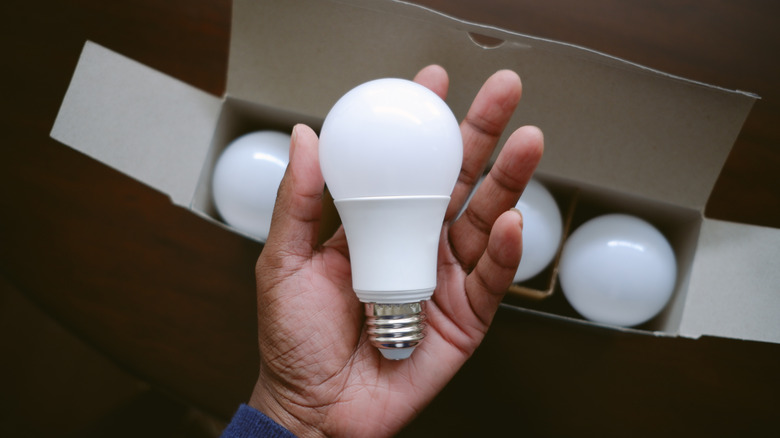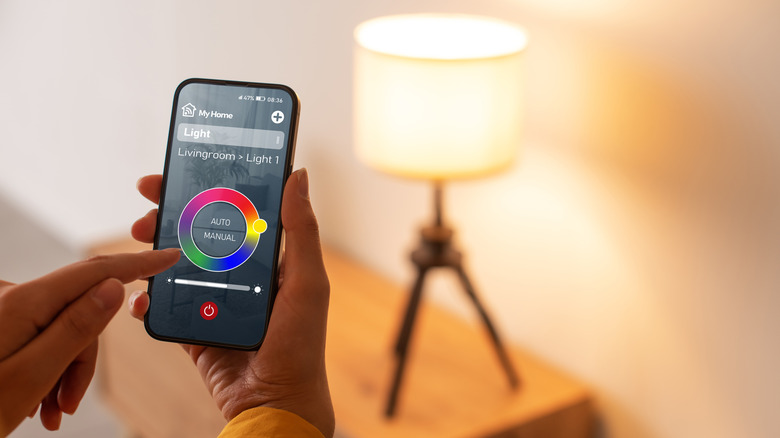Do Smart Bulbs Use More Electricity Than Regular LED Bulbs?
From the convenience of turning on the lights with a simple voice command to setting up an automated lighting schedule, it's easy to see why smart bulbs have become so popular in recent years. Smart bulbs do exactly what smart devices have promised to do: make our lives easier. The convenience of smart bulbs is hard to overstate; coming home after a long day at work to the warm glow of your lights already turned on or telling Google or Alexa to dim the living room lights as you sink into your couch before streaming a TV show — no need to get up and do it yourself — is the stuff of dreams. As a bonus, you may even think your smart bulbs are energy efficient, saving you money while contributing to a greener environment.
While it's indisputable that smart bulbs consume less energy than traditional incandescent bulbs, now that America has banned incandescent bulbs and more and more consumers are using LED bulbs, regardless of whether they're smart or not, a new question has come to the forefront: Do smart bulbs use more electricity than regular LED bulbs? As counterintuitive as it may seem, the answer is yes: Smart bulbs do use slightly more energy than regular LED bulbs. However, for many people, the difference in consumption is so small it probably won't be enough to convince them to give up the convenience of smart lighting.
Energy consumption of smart bulbs vs. regular LED bulbs
Both smart and regular lightbulbs use LED technology, which makes them much more energy-efficient than the incandescent bulbs that lighted most homes up until a couple of years ago. While smart and regular LED bulbs use the same energy-saving technology, they differ in a significant way — smart bulbs consume energy even when they're turned off; regular LED bulbs stop using energy when you turn them off. Smart bulbs and other appliances that use electricity even when they're not in use are known as vampire devices.
According to the U.S. Department of Energy, devices left in standby mode make up about 5% to 10% of a home's total electricity use. For the average U.S. household, that could mean spending an extra $100 on electricity. The amount of energy a smart bulb consumes varies from one manufacturer to another. For example, the Philips Hue Connected Energy Consumption Study found that their smart bulbs had a standby consumption below 0.5 watts. The extra energy pull is so insignificant that you'll spend less than a few cents a month to keep your smart bulbs connected and ready to receive commands in standby mode.
However, keep in mind that the extra cost is per lightbulb. So, the more smart bulbs you have, the higher your monthly electricity bill will be. Still, for most people, the cost will be negligible. Furthermore, since smart bulbs offer more control over the lighting in your home than traditional LED bulbs, including scheduling, dimming, and remote control, there's a good chance you'll change your power usage habits and save money in the long run, especially when paired with other energy-saving devices that could help cut down your power bill.

